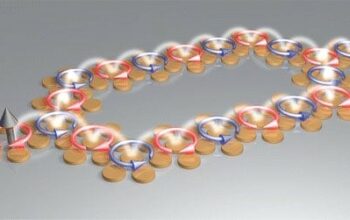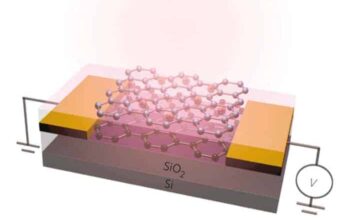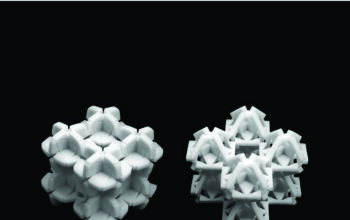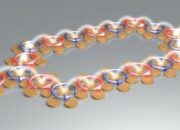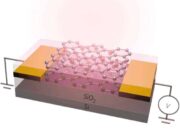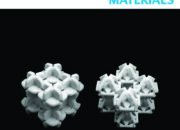Negative index materials (NIMs) are a remarkable subset of metamaterials characterized by their unusual refractive properties. The concept involves a refractive index that defies the conventional laws of optics, specifically manifesting a negative value. In this discourse, the focus will pivot on the intriguing interplay between ferromagnetic materials and superconductors in the context of negative index behavior. To facilitate an in-depth understanding, the discussion will unfold through an exploration of fundamental principles, emerging applications, experimental methodologies, and the prospective impact on both theoretical and applied physics.
The primary characteristic of a negative index material lies in its ability to bend light in a manner contrary to the typical refractive behavior predicted by Snell’s law. Under normal circumstances, light traveling from a medium of lower refractive index to one of higher index bends towards the normal. Conversely, a negative index material causes light to refract on an opposite trajectory, effectively allowing for phenomena such as reverse Doppler effects and superlensing. This radical shift in optical behavior underpins substantial research into various applications, particularly how ferromagnetic properties can induce negative indices in certain conditions.
Ferromagnets, substances characterized by their capacity to become magnetized, exhibit marked polarization phenomena and intrinsic magnetic ordering. When alloyed or combined with certain types of semiconductors or superconducting materials, ferromagnetic properties can give rise to conditions necessary to achieve a negative refractive index. The inclusion of ferromagnetic elements in the composition of NIMs introduces a magnetic anisotropy that attracts rigorous examination.
Superconductors, conversely, are materials that exhibit zero electrical resistance and expulsion of magnetic fields below a critical temperature. When these superconductors exhibit simultaneous ferromagnetic properties, they create a complex interplay of electronic and magnetic properties that can further be utilized to advance the field of NIMs. The engineering of hybrid systems composed of ferromagnets and superconductors opens up intriguing avenues for the manipulation of electromagnetic waves, as they can exhibit behaviors that render negative index phenomena feasible.
At a foundational level, the emergence of a negative index in materials can be understood through the principles of dispersion relations and effective medium theory. In essence, for a material to function as a negative index medium, it must simultaneously have negative permittivity and negative permeability in a chosen frequency range. Ferromagnetic materials possess this dual behavior under specific conditions, particularly when engaged in resonance phenomena such as gyromagnetic resonance or when utilizing spintronics. The manipulation of electron spins within ferromagnets leads to substantial adjustments in the material’s permittivity and permeability, thereby allowing for the possibility of achieving a negative effective index.
Recent advancements in fabrication techniques have led to more sophisticated approaches to creating negative index materials. The integration of nanostructured ferromagnets with superconductors via approaches such as pulsed laser deposition and chemical vapor deposition enhances the scalability and tunability of these materials. Furthermore, nanoscale engineering allows for the fine-tuning of local field interactions that fundamentally govern the underlying physics of NIMs. By leveraging advanced lithographic techniques, researchers can design meta-atoms that exhibit specific optical responses, functionally achieving the desired material characteristics.
The empirical study of NIMs constructed from ferromagnetic and superconducting materials encompasses a variety of methodologies. Techniques such as photonic bandgap analysis, reflectance, and transmission measurements under varying electromagnetic field conditions provide insight into the behavior of these engineered composites. Time-domain spectroscopy and near-field scanning optical microscopy further facilitate a nuanced exploration of the interaction between light and these unconventional materials, shedding light on the fundamental physical processes at play.
The implications of employing negative index materials derived from ferromagnetic and superconducting systems transcend mere theoretical curiosity. In practical applications, the potential for designing efficient optical devices, including superlenses that overcome diffraction limits, and invisibility cloaks demonstrates the transformative power of these materials. Such advancements could revolutionize telecommunications by yielding faster data rates and enhancing signal integrity through the minimization of losses associated with conventional materials.
Moreover, the intersection between ferromagnets and superconductors fosters an environment ripe for innovation in quantum computing and spintronic devices. The exquisite tuning of magnetic properties could lead to enhanced qubit design through improved coherence times and scalability. The integration of NIMs into these cutting-edge technologies advocates for a multi-disciplinary approach to problem-solving in physics, necessitating collaboration across materials science, electrical engineering, and applied mathematics.
In conclusion, the exploration of negative index materials through the lens of ferromagnets and superconductors offers a profound opportunity for discovery and advancement. Delving into the fundamental properties and experimental metrics provides a framework for appreciating the complexity and potential of NIMs. The synthesis of ferromagnetic and superconducting properties lays the groundwork for innovative designs that challenge our traditional understanding of light-matter interaction. As research continues to advance, one can anticipate far-reaching impacts across the spectrum of technology-driven fields, ushering in a new era of materials with capabilities once thought to reside solely within the realm of theoretical physics.

